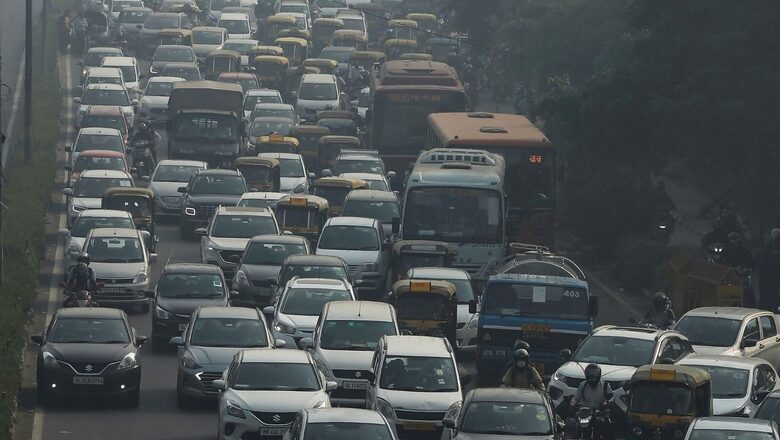
views
Air pollution remained extremely high in New Delhi on Thursday, a day after authorities closed schools indefinitely and shut some power stations to reduce smog that has blanketed the city for much of the month.
New Delhi’s air quality remained very poor, according to SAFAR, the environmental monitoring agency. The concentration of tiny airborne particles less than 2.5 microns in diameter known as PM 2.5 neared 300 micrograms per cubic meter in some parts of the city.
The World Health Organization designates the maximum safe level as 25. The tiny particles can lodge in the lungs and other organs, causing long-term health damage.
The national capital, a city of 20 million, is one of the world’s most polluted cities. Air quality often hits hazardous levels during the winter, when the burning of crop residue in neighbouring states coincides with lower temperatures that trap smoke. The smoke travels to New Delhi, obscuring the sky.
In 2020, 13 of the 15 cities with the most polluted air were in India.
“In northern India, the autumn spike in air pollution relates in part to the annual burning of crop residue in fields,” Deborah Seligsohn, an Asia air pollution expert at Villanova University, told Associated Press.
Delhi’s pollution woes are, however, due to various other causes too.
Auto emissions contribute nearly 25% of the city’s pollution in the winter, according to government data. Other sources of air pollution include vehicle emissions, electricity production and heavy industry, including steelmaking and brick kilns, and smoke from firecrackers linked to festivals, construction dust and agricultural burning.
Several studies have estimated that more than a million Indians die each year from air pollution-related diseases.
“It remains unclear how much of an impact a proposed pollution lockdown “will have on New Delhi’s air pollution,” Seligsohn said.
While the Delhi government has shown its willingness to impose an emergency weekend lockdown similar to the one implemented during the pandemic it doesn’t have the power to shut down traffic and industry regionally.
“This lockdown would be in New Delhi, but a significant portion of Delhi’s air pollution doesn’t come from the city itself it’s a regional air shed,” said Seligsohn.
To combat pollution, the Delhi government on Wednesday issued 10 directions, including a ban on the entry of trucks carrying non-essential items in the city and closure of schools and colleges till further orders, even as the air quality improved marginally due to a dip in emissions from farm fires. The Delhi government has banned construction and demolition activities in the city till November 21. It has also ordered its employees to work from home till Sunday.
The Delhi government had earlier announced the closure of all schools, colleges and educational institutions till Sunday and banned construction and demolition activities till November 17. Delhi Environment Minister Gopal Rai said 1,000 private CNG buses will be hired to strengthen the public transport system.
(With inputs from agencies)
Read all the Latest India News here

















Comments
0 comment